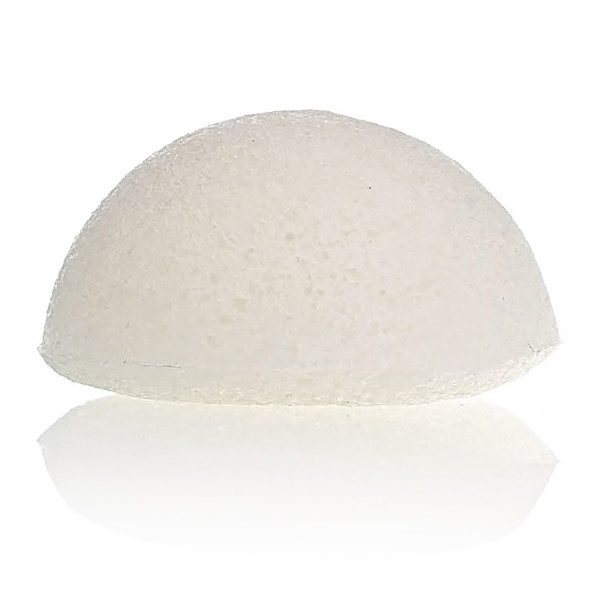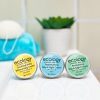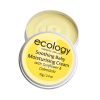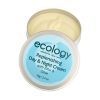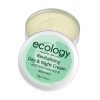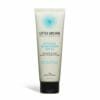Natural Skincare
Rosacea – Causes, Triggers & What You Can Do About It
Rosacea is a skin condition that affects 1 in 10 people.
…and it’s one of the most confusing, frustrating and least understood skin conditions.
Mainly because there seem to be so many factors involved – from genetics to the immune system, vascular system and the skin barrier itself.
…and because it can be hard to know if you actually have rosacea or ‘just rosy cheeks’
Which is why we put together this guide – to help you understand what might be going on for you and work out what to do next…
But first…
Did you know that not all 'rosy cheeks' are rosacea?
Having ‘rosy cheeks’ is a symptom of rosacea… but not all rosy cheeks (or diffuse redness) is rosacea.
Rosacea and diffuse redness are skin conditions that have similarities…
…and also important differences.
Diffuse redness is commonly mistaken for rosacea (which is why a diagnosis is important)

WHAT IS ‘DIFFUSE REDNESS’?
Diffuse redness is often referred to as ‘rosy cheeks’
It’s caused by enlarged or dilated blood vessels in the face – mostly in the nose, forehead, chin and cheeks
Diffuse redness is more common in people with fair skin of Irish, Celtic or European origin because the blood vessels are closer to the surface of the skin… so any flushing is more visible.
This means diffuse redness can be present ‘from birth’ …maybe you blushed easily as a child or you always got a red face when exercising.
Or diffuse redness can occur as a result of:
- Ageing – our blood vessels become less ‘elastic’ as we age
- Sun bathing and sun damage
- Pregnancy, oral contraceptives and other hormonal shifts
- Extreme weather changes
- Photosensitising skincare or medications
Fair skinned people are also more likely to have thinner skin and sensitive skin.
Thinner skin is more affected by the sun, heat, cold and wind.
And thin skin has less lipids (fats and oils) in it to act as the skin’s barrier function.
This can make skin more sensitive to allergens, irritants and moisture loss.
HOW IS ROSACEA DIFFERENT TO ‘DIFFUSE REDNESS’?
Diffuse redness is a ‘symptom’ of rosacea.
Which means people with rosacea can also be very affected by the sun, heat, cold and wind. And they often have less lipids in their skin to protect it from irritants and moisture loss…
…but not all diffuse redness is rosacea.
Rosacea has the combination of a few factors going on:
- A weakened skin barrier defence
- An ‘over excitable’ immune system
- Permanent changes to the blood vessels over time and growth of new blood vessels leading to more flushing and redness
- Higher levels of free radicals and oxidative molecules in skin
It’s super important to see a dermatologist or a corneotherapist to get a diagnosis for rosacea.
Rosacea is a progressive skin condition… (which means it can get worse with time)
….unless it’s diagnosed and properly managed with a treatment plan that includes both internal and topical measures.
What ‘Causes’ Rosacea?
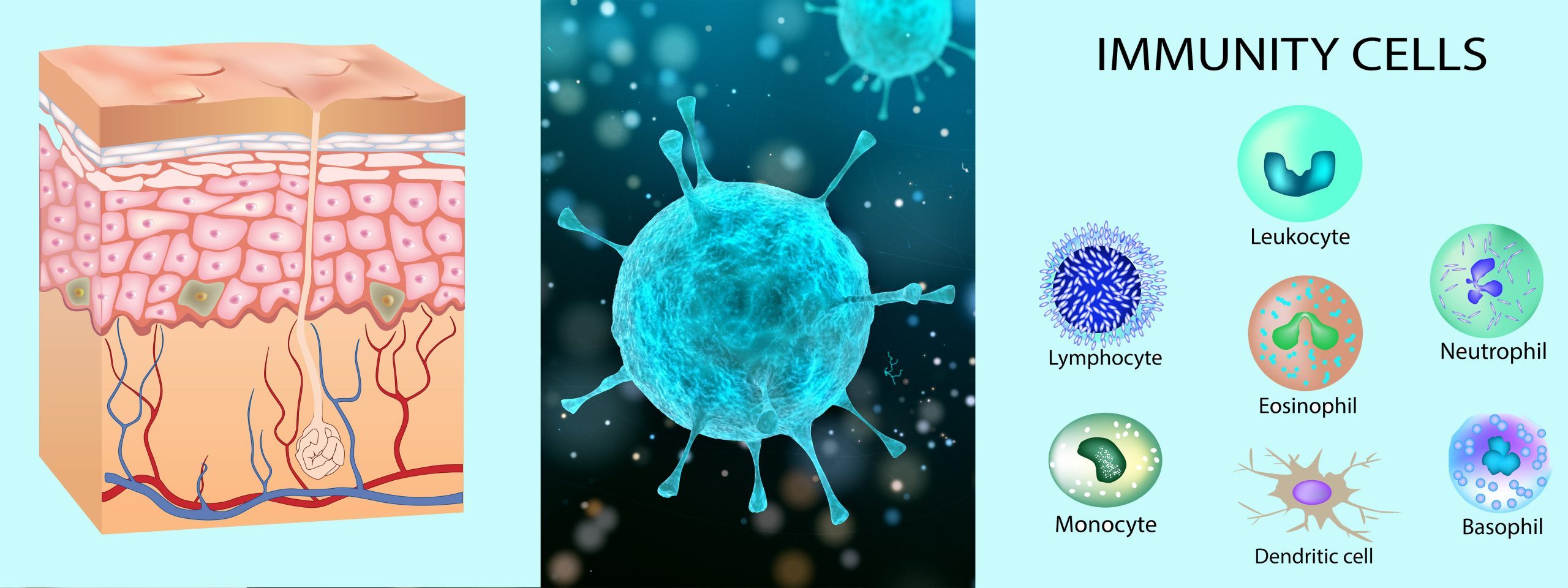
Right now there are no confirmed causes for Rosacea.
…but we do know some of the factors that can play a part.
These factors can affect how responsive the skin is to the triggers for flushing. And also what happens in the skin during a flush that can lead to rosacea symptoms progressing over time.
Here are THE mechanisms or factors involved with rosacea:
- Genetics: Rosacea is more common in fair skinned women of Irish, Celtic or European origin who have a family history of rosacea
- An ‘Overexcitable’ Immune Response: Our skin is our first line of defense against the world. So it contains immune proteins to help destroy any ‘invaders’. These immune proteins also activate the rest of the immune system to come and defend against the ‘invasion’.
This kind of immune response is normal.
But people with rosacea have very high levels of these immune proteins, enzymes and mast cells in their skin. And these immune cells and proteins are all on high alert.
(so they’re much easier to trigger to ‘call in’ extra immune proteins) - Weakened skin barrier defenses: There’s a collection of saturated fatty acids, cholesterol and ceramides that sits in between our skin cells. These lipids keep allergens and irritants out and moisture in our skin – this is our ‘skin’s barrier function’.
People with rosacea are more likely to have a thinner or weakened barrier. So the immune system is constantly triggered by things like: skincare products, microbes on the skin, wind and other environmental factors.
When triggered, the immune system sends blood and more immune proteins to the area. Leading to ‘flushing’ redness and inflamed skin. - Vascular system: In people with rosacea, the sudden rush of blood to the face during a flush triggers the longer term growth of new blood vessels.
It becomes a spiral. More blood vessels in the surface of the skin increases the chance of sudden flushes… leading to the growth of more new blood vessels.
Which is why rosacea can progress over time if triggers are not found and reduced - Microbes on the skin: It’s normal to have microbes on the skin, including demodex (a microbe that has been particularly focussed on in people with rosacea)
But if the skin’s barrier is weak or has ‘holes’ in it… these microbes are more likely to ‘get in’ and trigger the immune system.
When triggered, the immune system sends blood and more immune proteins to the area. Leading to ‘flushing’ redness and inflamed skin (and this triggering happens over and over again) - Oxidation: The immune response also releases free radicals and other oxidative molecules. And UV light also increases the levels of free radicals and oxidative molecules in skin.
Sunlight is a major trigger for rosacea… and studies show that people with rosacea have higher levels of these reactive oxygen molecules in their skin. Treatments that help to increase antioxidants in skin have been shown to be helpful. - Gut: People who have rosacea are also more likely to have Crohns, ulcerative colitis, coeliac disease, small intestinal bacterial overgrowth (SIBO), h.pylori and IBS.
I’m not suggesting there’s a ‘causal’ effect here. But it’s interesting that these conditions are often found together with rosacea. And studies show that the resolution of gut issues (like SIBO) can also improve rosacea. So it’s worth a discussion with your practitioner - Possibly Vitamin D: There may be a connection between Vitamin D and the increased levels of immune proteins in the skin. More research is needed on the Vitamin D connection in rosacea.
How do you know if you have Rosacea?

Honestly, there’s no way to ‘work it out for yourself’
It’s super important to see a dermatologist or a corneotherapist to get a diagnosis for rosacea.
These practitioners will do a full patient history and skin analysis with you.
As well as any testing around other factors like the gut, microbes and adrenals.
(if they don’t test for other factors, a naturopath can organise this testing for you)
But just so you know, there are 4 sub-types of rosacea.
They all look and feel different and they have differing treatment approaches.
- Subtype 1: Facial flushing and redness. Swollen skin and stinging, burning, roughness, scaling or dry skin (dry rosacea)
- Subtype 2: Facial flushing and redness that can be more persistent or constant. Swollen fluid filled bumps that can look like pimples or acne (wet rosacea)
- Subtype 3: Thickening of skin around the nose leading to a ‘bulbous’ or enlarged nose. Less common and affecting more men than women
- Subtype 4: Sensitivity to light, burning, stinging, ‘gritty’ feeling eyes. Can permanently affect vision (ocular rosacea)
What can trigger a Rosacea flare up?

Anything that triggers facial flushing can cause a flare-up of rosacea symptoms.
And because each flush can contribute to the growth of new blood vessels in the skin…
…anything that causes sudden flushing can have a long term effect too.
Leading to the progression of rosacea over time.
All of the triggers below can either:
- Bring blood flow to the surface of the skin, or
- Lead to an activation of immune cells and proteins in the skin
…leading to redness and inflamed skin.
Some of these triggers can lead to a weakened skin barrier defense and skin sensitivity
(which in turn can trigger the immune system if irritants are ‘getting in’ to the skin)
POSSIBLE TRIGGERS:
- Sunlight or UV exposure: This seems to be the top trigger for people with rosacea. UV light stimulates oxidation in the skin leading to inflammation. Sunlight also radiates heat, bringing blood flow to the surface of the skin. And there may also be a link between Vitamin D link and increased levels of immune proteins in skin for people with rosacea.
- ‘Heat’ exposure to the face: Think sauna’s, steam baths, hot showers, sitting in front of a fire or heater, facial cleansing with hot water
- ‘Hot’ foods and drinks: Think hot drinks like coffee, tea and hot chocolate, hot foods like soups or stews and also spicy foods
- Weather: Extremes in hot or cold weather, wind and wind burn, humidity
- Alcohol: Dilates blood vessels which can lead to flushing. In some people, wine can also trigger a histamine response through inflammatory mast cells
- Exercise that raises body temperature or causes sweating: Think high intensity ‘huffy puffy’ exercise or outdoor exercise. Sweat can also burn or itch when it dries, irritating skin
- Emotional extremes: Embarrassment, anger or bursts of laughter can cause blood flow to the face. Mental and emotional stress can also increase sweating which can burn and itch when it dries
- Stress and anxiety: Stress hormones can increase oxidation and inflammation in the body (and skin)
Stress hormones can also affect skin barrier function directly as they reduce the body’s production of ceramides, cholesterol and fatty acids. These lipids form the ‘glue’ between skin cells to keep moisture in skin and allergens and irritants out - Medications: Vasodilators can dilate blood vessels. Niacin (Vitamin B3) and betablockers may cause a rush of blood to the face. Topical steroids can also affect rosacea. Some medications also sensitise skin to sunlight
- Hormonal fluctuations: During menopause, pregnancy and after child birth
- Perfumes and essential oils: Check products for the ingredient ‘fragrance’ or ‘parfum’. This is a ‘catch-all’ name for 1,000’s of chemicals that can potentially irritate skin. Some essential oils (like citrus or bergamot) can also sensitise skin to sunlight and other essentials oils can be generally irritating to sensitive skin
- Skincare and makeup: Some ingredients in skincare can damage a weakened skin barrier (detergents in cleansers and shampoos like sodium lauryl sulphate, acids like AHA’s, BHA’s and fruit acids, emulsifiers like PEG’s and alcohol)
…and some ingredients can trigger an already excitable immune system if they ‘get into’ skin (like perfumes, ‘fragrance’ or ‘parfum, some essential oils, preservatives)
Not all of these factors will trigger a flare or a flush for everyone with rosacea…
It’s important to find the specific triggers for you… so you can avoid or at least minimise your personal triggers and control rosacea flare ups.
What can you do about Rosacea?

Although there are no ‘cures’ for rosacea, it can be managed 🙂
…but it will take time, patience and commitment.
Here’s some broad steps that will help…
#1. GET YOURSELF A TEAM
It’s super important to work with practitioners who specialise in skin…
and also practitioners that specialise in reducing inflammation, oxidation and stress.
Together you can build out a ‘holistic’ treatment plan.
This will help you to reduce and control rosacea flares over time.
Think about:
- A Dermatologist: for diagnosis and any medicated prescriptions
- A Corneotherapist: for diagnosis and to help support and rebuild skin’s barrier function. Supporting skin’s barrier function will help reduce topical irritants and other environmental factors from triggering flare ups. This is an important first step in treating rosacea, and
- A Naturopath: for investigating gut and adrenal factors. Also for herbal prescriptions and strategies to help reduce immune responsiveness, inflammation and oxidation in the body and skin. And herbal support for blood vessels

#2. WORK OUT YOUR TRIGGERS
Keep a diary or journal of your flushes.
This will help you to work out what you might have done or eaten just before the flush.
Discuss your journal entries with your team of practitioners.
They can help you pin down your triggers.
The next step is to minimise or avoid completely the things that trigger a rosacea flare for you.
Swap them for other behaviours and make this a part of your daily life.
Try:
- Having lukewarm showers or baths instead of hot showers or baths
- Turning down indoor heating and draping cold cloths around your neck if you’re feeling hot
- Opening the car doors to let heat escape before getting in on a hot day
- Wearing zinc sunscreen and a wide brimmed hat when you’re out and about
- Waiting till hot drinks and food cool a little before drinking or eating, or going for an ice coffee or tea instead
- Wearing a soft, non-scratchy scarf or mask to protect your face on cold or windy days
- Reducing the intensity of your exercise or exercising in air-conditioning or in water (the pool or beach)
- Going for a swim at the beach instead of a run along the sand
- Exploring flavours and spices other than ‘curry’ and chilli spices and going for ‘milder’ versions of sauces and salsas
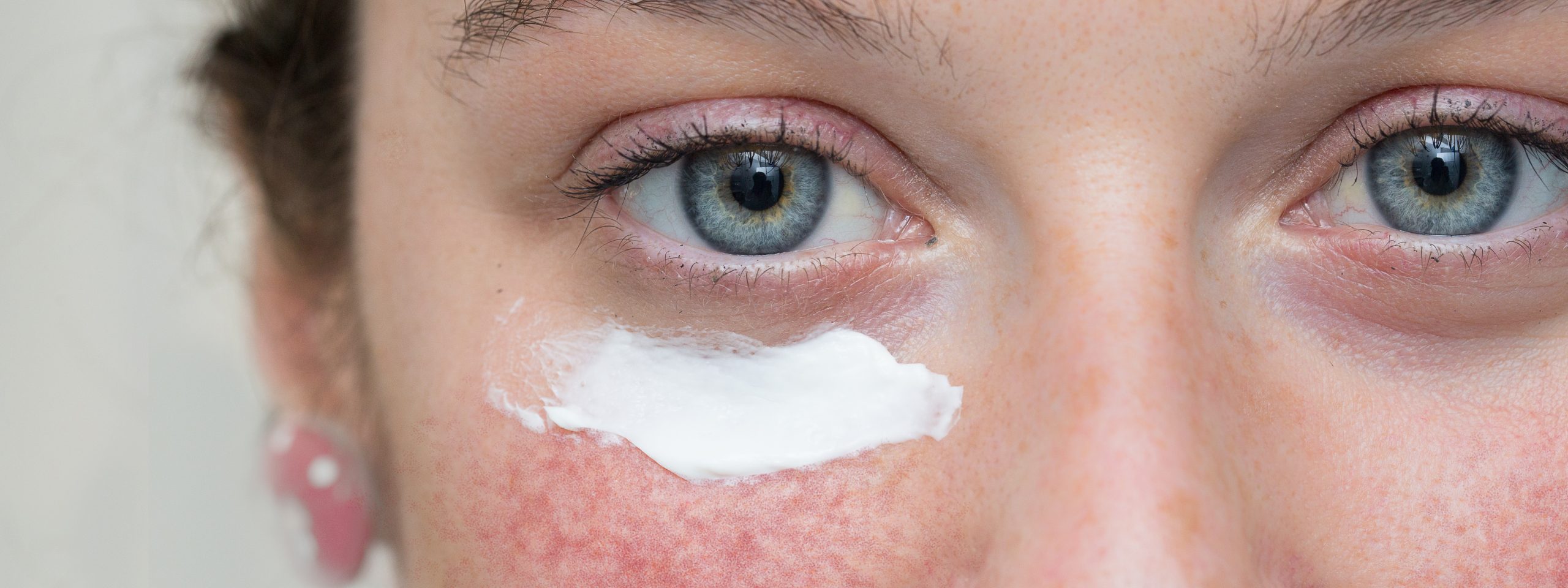
#3. SUPPORT AND STRENGTHEN YOUR SKIN’S BARRIER FUNCTION
Take a good look at your current skincare.
Skincare products that contain water, also contain:
- Emulsifiers (to help the water and oils play nicely together) and
- Preservatives (to prevent microbial growth)
The problem is that emulsifiers can break down the lipids in skin’s barrier function. And preservatives can irritate skin that has a weakened barrier function.
So better skincare options for rosacea prone skin are gel based or anhydrous (meaning no water)
Trial a break from anything that might potentially irritate your skin.
Look out for:
- Detergents and surfactants like sodium lauryl sulphate, coco betaine and emulsifiers like PEG’s. These can strip skin of it’s protective fats and oils.
Instead, choose gentle pH neutral cleansers in a milk or gel form. Also take a look at our Konjac Sponges and use very gentle motions to cleanse - Perfumes, ‘fragrance’, ‘parfum’ and some essential oils. These can be skin sensitising.
Instead, go for low-aroma, low-essential oil or fragrance free options - Anti-ageing ingredients like AHA’s, BHA’s fruit acids and chemical peels. These can strip skin of it’s protective fats and oils
- Alcohol and witch hazel (in concentrations greater than 10%) can also strip skin of it’s protective fats and oils
- Mineral oils like paraffin, petrolatum, synthetic wax and silicones can be too occlusive for rosacea prone skin. These ingredients can ‘seal’ the skin, preventing it from breathing. So they can trap heat in the skin and lead to blocked pores.
Instead take a look at our Ecology Creams. They contain fatty acids and cholesterol that help support and ‘rebuild’ barrier function. Our ‘original’ Ecology Creams are also low-aroma - Chemical sunscreens that contain ingredients like oxybenzone, avobenzone, octinoxate. These UV filters can irritate or lead to heat or warming of the skin. Instead go for zinc based sunscreens.
- ‘Hard’ water for cleansing skin. The mineral content in ‘hard’ water can be irritating for skin with a weakened barrier defence. Consider a water filter to ‘soften’ water and filter out these elements
Check out our…
Skin’s barrier function is made up of a collection of fatty acids, cholesterol and ceramides.
So skincare ingredients that contain these components are helpful for ‘rebuilding’ and supporting skin’s barrier function.
Natural fats like grass-fed tallow and emu oil contain lipids (fats, oils and cholesterol) found naturally in healthy skin which help to replace any missing components in skin’s barrier and prevent moisture loss.
You can find these ingredients in our Ecology Creams.

#4. REDUCE STRESS
We often don’t appreciate how much of a driver stress can be for skin issues.
Activities that reduce stress and anxiety are super helpful for reducing rosacea flares.
The things we find stressful and the things we find relaxing are all so individual…
So it’s helpful to try different things to work out what’s adding to your ‘stress load’ and what you find relaxing…
Try:
- Yoga (excluding ‘hot yoga’)
- Tai chi
- Relaxation massages (excluding the facial and ‘heat-intensive’ massage)
- Meditation, breath work and mindfulness practices
- A regular bedtime routine ensuring 8+ hours sleep a night
- A to-do list to help manage your time and priorities
- Floating in a float tank
It can take years for all of the factors underlying rosacea to come together and show up on the skin with flushing redness and inflammation.
…so know that it can take time, often months to repair the skin’s barrier defences and reduce inflammation in the skin.
But don’t give up!
Hang in there, be patient… and keep working on reducing your triggers and your flushing flares.
Hopefully now you have a fuller picture of what might trigger a symptom flare for you and what you can do about it in the shorter term and the longer term.
…and know that while it can take time, every small thing you do can make a difference.
Wait a sec... What can you do about Diffuse Redness?
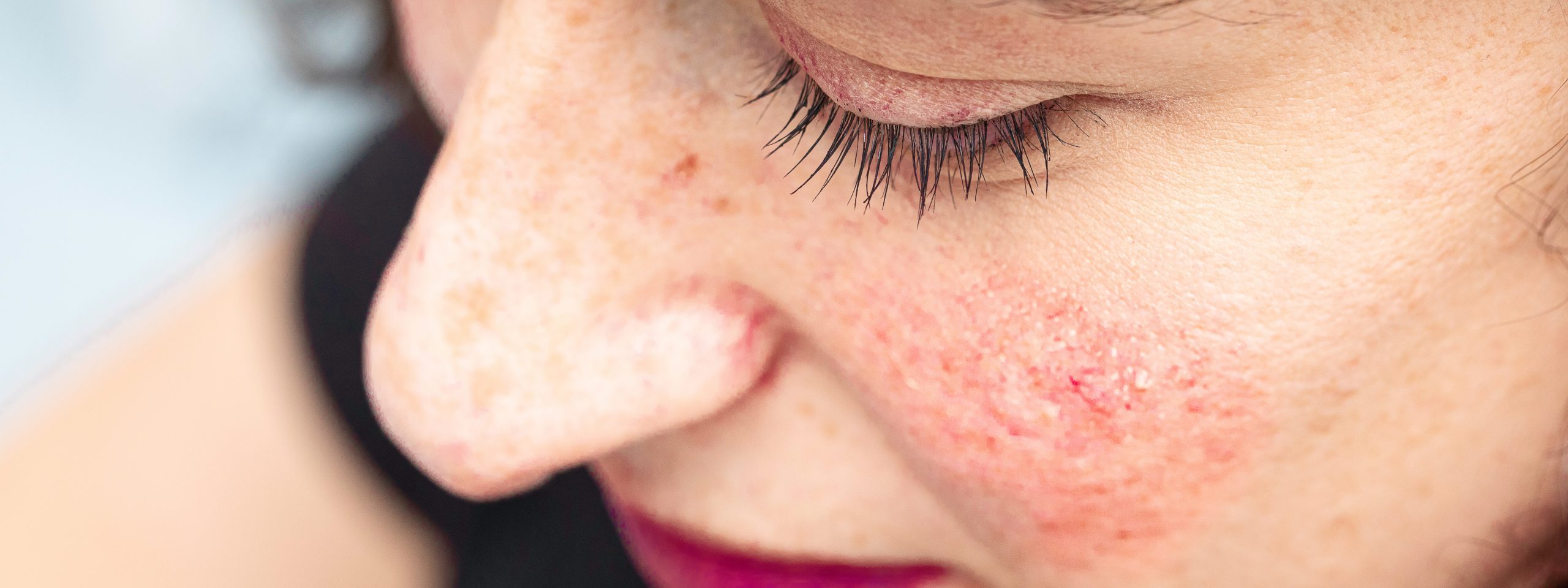
Diffuse redness is caused by enlarged or dilated blood vessels in the face
…and because of the nature of diffuse redness – there are things that can’t be changed.
Like your genetics and how close your blood vessels are to the surface of the skin (making any flushing more visible)
You might find it helpful to look at the triggers above for rosacea.
This will help you to work out how you can reduce any ‘extra’ redness due to flushing episodes.
Laser rejuvenation or Yellow LED light treatment performed by a professional skin therapist can be helpful in reducing the size of blood vessels and minimising redness. But it needs to be undertaken with care.
Having said that, there are some things you can do yourself…
Often people with diffuse redness have thinner skin that contains less lipids (fats and oils) in it to act as the skin’s barrier function.
Having less lipids can make skin more sensitive to allergens, irritants and moisture loss.
So, like with rosacea, the aim here is to…
SUPPORT AND STRENGTHEN YOUR SKIN’S BARRIER FUNCTION
Take a good look at your current skincare.
Skincare products that contain water, also contain:
- Emulsifiers (to help the water and oils play nicely together) and
- Preservatives (to prevent microbial growth)
The problem is that emulsifiers can break down the lipids in skin’s barrier function. And preservatives can irritate skin that has a weakened barrier function.
So better skincare options for rosacea prone skin are gel based or anhydrous (meaning no water)
Trial a break from anything that might potentially irritate your skin.
Look out for:
- Detergents and surfactants like sodium lauryl sulphate, coco betaine and emulsifiers like PEG’s. These can strip skin of it’s protective fats and oils.
Instead, choose cleansers with gentler detergents like yucca extract and take a look at our Konjac Sponges for facial cleansing - Perfumes, ‘fragrance’, ‘parfum’ and some essential oils. These can be skin sensitising.
Instead, go for low-aroma or low-essential oil options - Anti-ageing ingredients like AHA’s, BHA’s fruit acids and chemical peels. These can strip skin of it’s protective fats and oils
- Alcohol and witch hazel (in concentrations greater than 10%) can also strip skin of it’s protective fats and oils
- Mineral oils like paraffin, petrolatum, synthetic wax and silicones can be too occlusive. These ingredients can ‘seal’ the skin, preventing it from breathing. So they can trap heat in the skin and lead to blocked pores.
Instead take a look at our Ecology Creams. They contain fatty acids and cholesterol that help support and ‘rebuild’ barrier function. Our ‘original’ Ecology Creams are also low-aroma - Chemical sunscreens that contain ingredients like oxybenzone, avobenzone, octinoxate. These UV filters can irritate or lead to heat or warming of the skin. Instead go for zinc based sunscreens.
- ‘Hard’ water for cleansing skin. The mineral content can be irritating for skin with a weakened barrier defence. Consider a water filter to filer out these elements
Check out our…
Skin’s barrier function is made up of a collection of fatty acids, cholesterol and ceramides.
So skincare ingredients that contain these components are helpful for ‘rebuilding’ and supporting skin’s barrier function.
Natural fats like grass-fed tallow and emu oil contain lipids (fats, oils and cholesterol) found naturally in healthy skin which help to replace any missing components in skin’s barrier and prevent moisture loss.
You can find these ingredients in our Ecology Creams.
Hope this helps!
Wishing you silky smooth skin!


